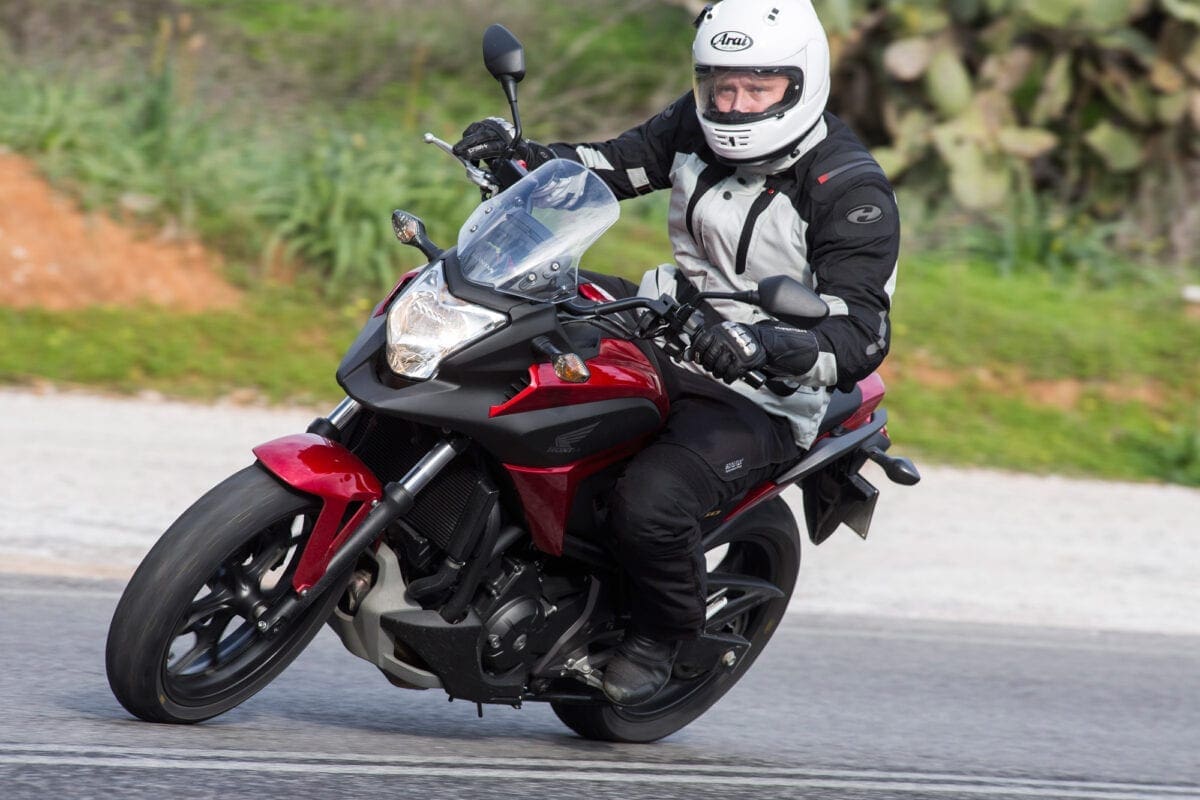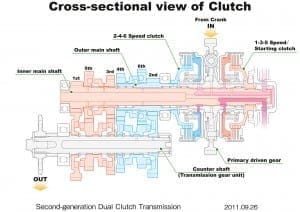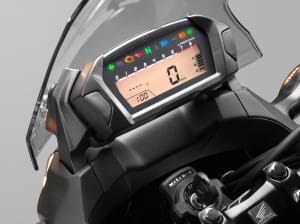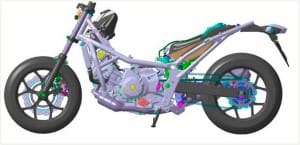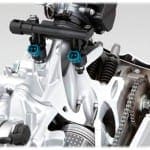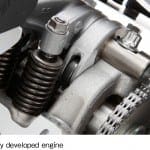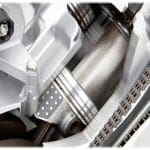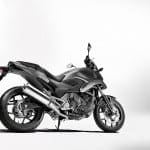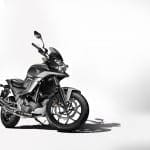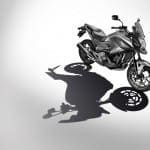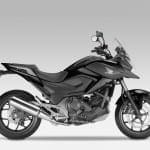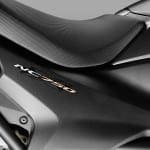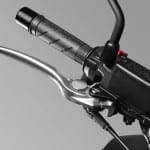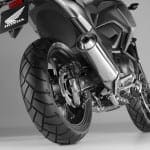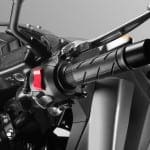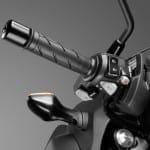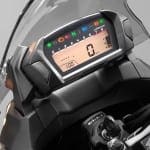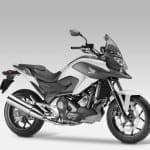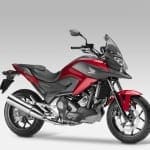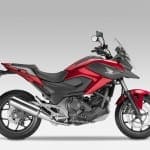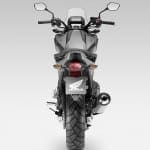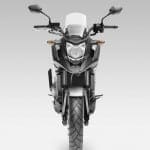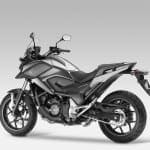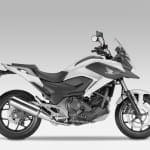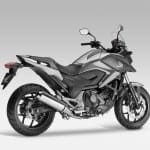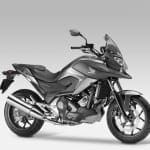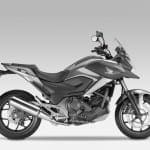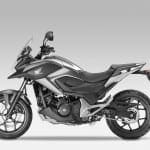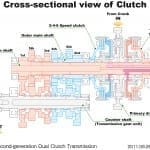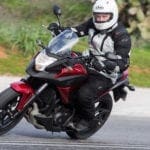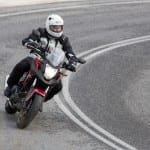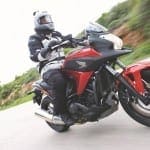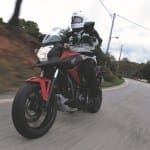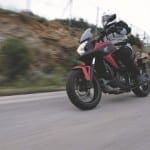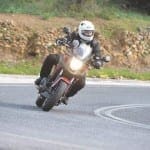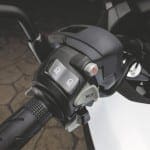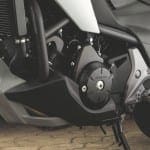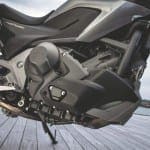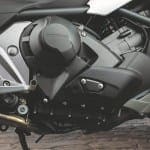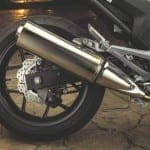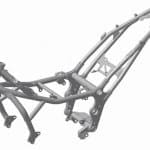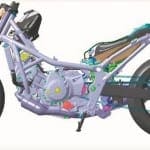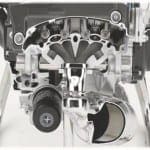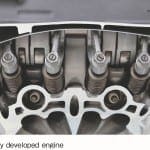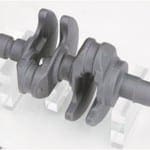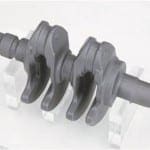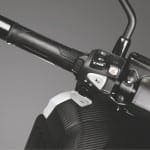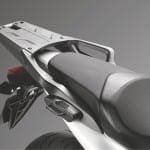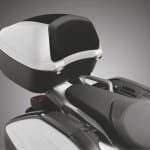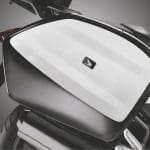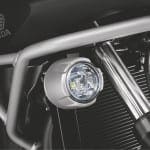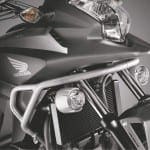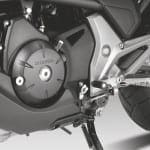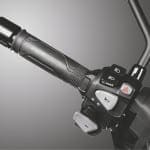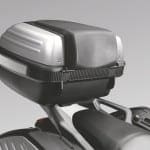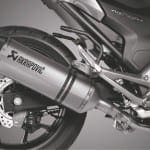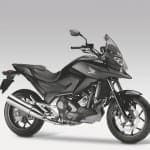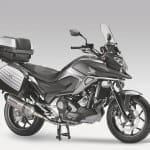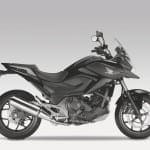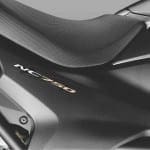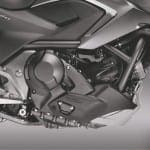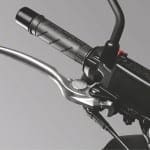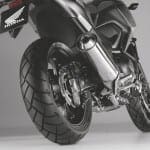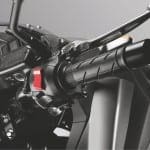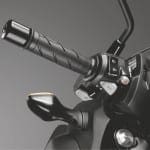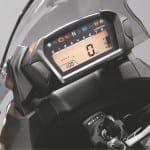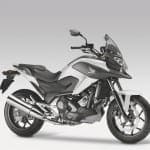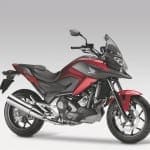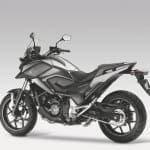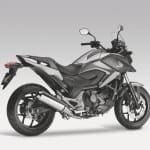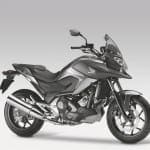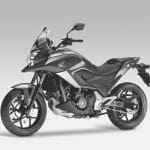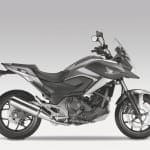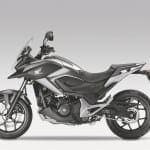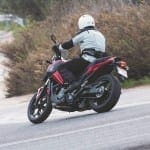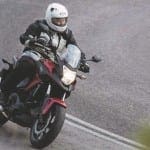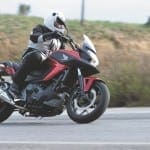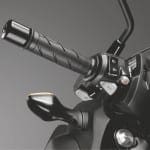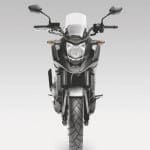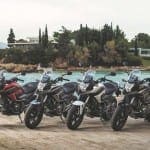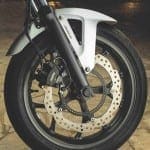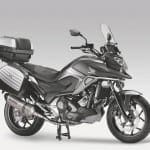£6899 | 54bhp | 50lb-ft | 745cc parallel twin-cylinder
Enjoy everything More Bikes by reading the MoreBikes monthly newspaper. Click here to subscribe, or Read FREE Online.
After European success with 2012’s adventure-style NC700X, and naked NC700S, Honda has built on its unique 670cc platform with an R&D vision of “More fun, more joy, go a bit further”. This is the automatic bike, but with a standard manual transmission the NC750X costs £6299. The S is also available with the new auto motor at £6399 (or £5499 without), as is the Integra scooter (reviewed over the page), which shares the powertrain, and much of the chassis.
Using a relatively long piston stroke, the NC’s engine red-lines at 6500rpm, while the peak power of 54bhp is reached at 6250rpm (a Honda CB500X peaks at 8500rpm, and a VFR1200F at 10,000rpm). Despite the layout, twin balancer shafts, a 270° crank and a well-tuned exhaust (which uses just one downpipe, the two-into-one manifold being cast into the head) help the bike sound and feel quite similar to a 90° V-twin, while the unstressed motor manages a claimed mpg of 81.6mpg, which is outstanding for a touring / commuting bike. This economy is achieved, along with the lower revving characteristics, by reducing friction as much as possible – less (and smaller) parts are used by having a single throttle body and running the water pump off the camshaft, along with the oil pump from one of the balancer shafts.
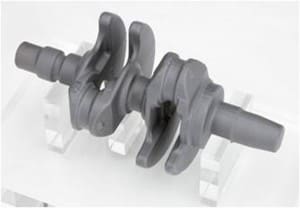 What’s really impressive though is the Dual Clutch Transmission (DCT), which offers a fully-automatic or push-button manual gear change. One clutch is for start-up, 1st, 3rd and 5th gears, with the other for 2nd, 4th and 6th. While the duplication of parts in the system causes extra weight, it’s an incredibly smooth and reliable system as one gear is held on a clutch as the next cog transfers in on the other.
What’s really impressive though is the Dual Clutch Transmission (DCT), which offers a fully-automatic or push-button manual gear change. One clutch is for start-up, 1st, 3rd and 5th gears, with the other for 2nd, 4th and 6th. While the duplication of parts in the system causes extra weight, it’s an incredibly smooth and reliable system as one gear is held on a clutch as the next cog transfers in on the other.
There are two auto modes – Drive and Sport – for optimum economy or sportier riding (the ECU allowing the engine to rev a little higher before shifting) respectively. When switched to manual, large buttons on the left handlebar allow you to quickly change up and down the ‘box without having to change throttle position (a traditional foot-operated selector is available as an option for the DCT models). The software has been updated for the new model to take advantage of the 75cc capacity increase (achieved through a 4mm larger bore) and taller gearing, resulting in less need for gear changes and a smoother ride. Even in manual DCT mode, it’s impossible to force the bike into the wrong gear.
The steel pipework frame is the same across the X, S and Integra models, and offers a low centre-of-gravity thanks to the position of the engine and fuel tank. While all three have 41mm right-way-up forks, the travel on the X is longer, at 153.5mm, versus 120mm. The steel swingarm of the NC series remains (despite a same-length alloy version now featuring on the Integra), and while the bike’s most advanced tech is in the transmission, it’s a package that works very well, making for a confidence-inspiring, un-aggressive ride.
The Anti-Lock Braking System features a 320mm single wavy disk grabbed by a two-piston Nissin caliper up front, with a 240mm rear disk and single-piston caliper on the rear. It’s more than enough for the 229kg 750X, and the ABS isn’t intrusive or juddery if you call upon it.
The narrow form of the bike defies the 830mm seat height, and I found it comfortable and easy to maneuver, being 5’10”. U-turns are very easy on the NC, and the perfect clutch-slip produced by the DCT really helps as you only need to concentrate on your balance and steering position.
With its excellent fuel economy and generous storage space, the NC750X is a great touring machine, and a superb commuter. If speed is your only pleasure, it’s not the bike for you, but the easy-going handling and faultless automatic gearbox make it an ideal bike for enjoying the scenery of the UK and beyond. It’s a shame it’s too powerful for those on an A2 licence, but I’m sure we’ll see the DCT technology finding its way onto some of Honda’s 47bhp bikes.
Once thing to note if you’re planning some big adventures on an NC is the fuel tank’s location: The filler is under the pillion seat, which isn’t a problem until you use a tail pack as you’ll have to unstrap it at the pump. Of course, the 14.1 litre (3.1 gallon) tank would give a range of up to 253 miles based on Honda’s claimed figures, so it shouldn’t be a regular inconvenience, and it’s one that’s outweighed by the benefit of the large storage space where the tank would normally sit. Riding in Sport mode, with a fair few high-speed runs, I saw 72mpg at first, but this soon dropped to 59mpg. I could have travelled 183 miles, but riding how I normally would, I’d expect to easily see a range of more than 200 miles.
 Claimed to accept a full-face helmet, the storage space on the NC is great, popping open with a single-handed twist of the key (the lock is separate to the ignition barrel, and also operates the rear-seat release), but do check your own lid if it’s important to you to be able to leave it in the bike: A Schuberth S2 slotted in fairly easily, but the small video camera bracket on my Arai Rebel stopped the helmet from going in, and I did manage to scratch my lid in the process of trying. If this were my bike, I’d want to cover the dome-headed bolts inside the bin with some gaffer tape or sticky foam.
Claimed to accept a full-face helmet, the storage space on the NC is great, popping open with a single-handed twist of the key (the lock is separate to the ignition barrel, and also operates the rear-seat release), but do check your own lid if it’s important to you to be able to leave it in the bike: A Schuberth S2 slotted in fairly easily, but the small video camera bracket on my Arai Rebel stopped the helmet from going in, and I did manage to scratch my lid in the process of trying. If this were my bike, I’d want to cover the dome-headed bolts inside the bin with some gaffer tape or sticky foam.
So what’s it like to ride?
You’re not going to win many traffic-light Grand Prixs on the NC, but it’s more than fast enough for all but hard-core sportsbike fans. The real pleasure for me was being able to spend a little more time enjoying the Greek coastline of the European launch, and little less time worrying about which gear I was in.
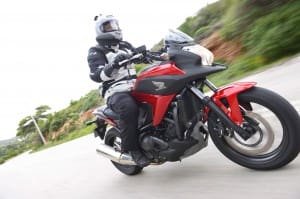 One of the benefits of a dual-clutch system is practically seamless gear changes – as the ‘box shifts up or down, the bike never pitches or bucks. Besides making for great two-up riding (no more helmet bumping), this means the bike is far more settled in corners if a new cog is needed. Occasionally, I’d find the bike entering a corner one gear higher than I’d have preferred, but the transition down was always seamless. Of course, you can always ride the DCT-equipped bike in manual mode, but I generally just nudged the front-mounted down-change button to drop a cog and take advantage of better engine braking in a bend. Previously, overriding like this would switch the NC700 to manual mode, but now it simply takes over again when revs are high enough. The new software is so clever that even if it’s in the more economical ‘Drive’ mode, it’ll subtly alter its behavior if your riding style indicates you’ve moved from, for instance, unhurried city riding to more spirited twists and turns. I’m so impressed with DCT that I’d gladly gain an extra 10kg on my 2000 CBR600 if it meant I could have these smooth, fast, push-button changes.
One of the benefits of a dual-clutch system is practically seamless gear changes – as the ‘box shifts up or down, the bike never pitches or bucks. Besides making for great two-up riding (no more helmet bumping), this means the bike is far more settled in corners if a new cog is needed. Occasionally, I’d find the bike entering a corner one gear higher than I’d have preferred, but the transition down was always seamless. Of course, you can always ride the DCT-equipped bike in manual mode, but I generally just nudged the front-mounted down-change button to drop a cog and take advantage of better engine braking in a bend. Previously, overriding like this would switch the NC700 to manual mode, but now it simply takes over again when revs are high enough. The new software is so clever that even if it’s in the more economical ‘Drive’ mode, it’ll subtly alter its behavior if your riding style indicates you’ve moved from, for instance, unhurried city riding to more spirited twists and turns. I’m so impressed with DCT that I’d gladly gain an extra 10kg on my 2000 CBR600 if it meant I could have these smooth, fast, push-button changes.
The NC750X is a practical, friendly and enjoyable ride for anyone looking for a pleasant mountain tour, or simply in need of an economical way of getting into work. Simple tweaks like a grippier seat, along with the beefier engine and updated transmission make the new 750 a great evolution over last year’s model.
Tested by: John Milbank
Tech Spec
Price: From £6899 (£6299 without DCT)
Engine: 745cc Liquid-cooled transverse in-line twin-cylinder
Power: 54bhp (40.3kW) @ 6250rpm
Torque: 50lb-ft (68Nm) @ 4750rpm
Kerb weight: 229kg
Seat height: 830mm
Tank size: 14.1litres

